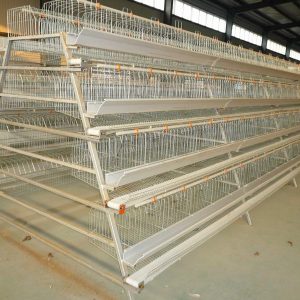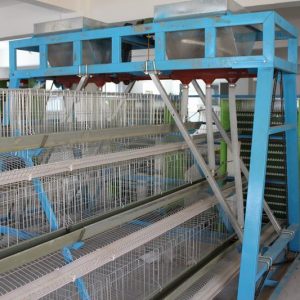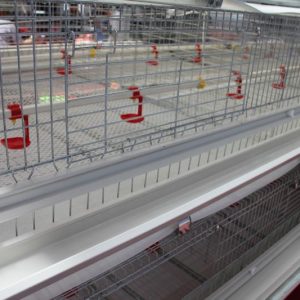
Causes of satiety shock in broiler breeders and control measures
During the feeding restriction process of broiler breeders, feeding is often restricted on the first day, and after feeding on the second day, the chickens’ crops are hard and full, lying on the ground, tremors all over, then head and neck weakness, mouth sticking to the ground and legs Stretching backwards and faeces are white, which can cause chicken death in severe cases. On the surface, although the direct loss is not large, the indirect damage is relatively large. It can cause indigestion and slow weight gain of some chickens. In the long run, it will not only cause a decrease in uniformity, but also affect the performance of production.
Prone to satiety shock
Generally, broiler breeders are prone to occur in the late brooding period (4-6 weeks), when the chickens are first restricted in feeding; in the early stage of rearing (6-12 weeks), in order to improve the uniformity, “four, three” or “five, The first feeding day after the “two” feeding restriction method is most likely to occur, and the time of occurrence is often within 1 to 2 hours after feeding; in the later stage of breeding (after 16 weeks), as the sexual organs begin to develop, the feeding restriction intensity changes Low, use “daily” or “six, one” feeding restriction, more feed a day, the occurrence of satiety shock is rare.
Chicken flocks with mechanical feeding systems have a fast feeding speed and are more likely to occur; larger chickens in the same house can grab more feed and are prone to occur, and smaller chickens are due to poor digestive system development , Is also prone to occur; in addition, excessive feeding restriction, hot weather, immune stress, excessive density, nipple drinking system, etc., all conditions that can affect the amount of drinking water are prone to satiety shock.
Symptoms after eating shock
The chickens were in good condition before this, and there was no abnormal situation. Generally, it occurred 1 to 4 hours after the chickens had eaten, and the most common occurrence was within 1 to 2 hours. The chickens that had shock often showed: The wings were drooping, the mouth was shook, and the legs were stretched out. A few chickens lay on their sides on the ground, the crops were full and hard with their hands, and some chickens shivered all over, and some died due to serious illness. The necropsy revealed that the crop was firm and full, the muscular stomach and the glandular stomach had very little material, the intestine was empty, and other important organs had no significant lesions.
preventive measures
1 Change feeding restriction program
Generally, satiety shock is likely to occur when the “four, three” or “five, two” feeding restriction is adopted. In this case, the “six, one” or “daily” feeding restriction method with weaker feeding restriction should be replaced in time, and Ensure that the feeding amount after changing the program must be accurate. When feeding, do it quickly, accurately and evenly, so that the feed is evenly distributed in the trough in the shortest time, without leakage or overflow, so that the chickens can only eat at the same time Equal amount of feed to avoid the occurrence of satiety shock due to fierce grabbing and excessive intake of feed.
2 Ensure adequate drinking water
First of all, ensure that the water level is sufficient, especially for nipple drinkers, at least one drinking nipple for every 8 chickens. The waterline pressure should be changed with the temperature of the chicken house to ensure that the chickens need to drink without water leakage. Carefully observe and adjust the height of the waterline every day. It rises to a 45-degree angle at the age of 3 days. In the rearing period, it gradually rises as the age increases, so that the chicken neck and the waterline are at a 75° angle. The chicken can move smoothly and comfortably. Drink water in. Secondly, check the leather pads and springs in the pressure reducing valve regularly to clean the scale and dirt in the pressure reducing valve to ensure its normal operation. Disinfect and clean the drinking water system on time to remove impurities, bacteria, drug residues and biofilm attachments inside the water pipe, so as to achieve the purpose of unblocked drinking water.
3 Observe the feed intake of chickens
Breeders should carefully observe the feeding situation of the chickens after each feeding. If they find that the feeding is uneven or the small groups with fierce competition, they should be timely and the feed should be removed and these chickens should be driven away to slow down the competition speed and guarantee Feed to the right amount of feed. In various situations where chickens are prone to satiety shock, focus on protection and walk back and forth in the chicken house. Once shock occurs, take the chickens to a well-ventilated and spacious area in time. Remember not to forcibly fill the chickens with water or Squeeze the crop, otherwise it will accelerate the death of the chicken. Strengthen the care of these chickens. After they can stand, let them drink some water before putting them in the chicken coop.
4 Improve the chicken house environment and reduce stress
Strengthen environmental management to provide comfortable growth conditions for chickens. First of all, ensure that the temperature is appropriate. In summer, strengthen ventilation and use wet curtains to reduce the temperature in the house. In winter, provide timely heating and take good measures to keep the chicken house under a comfortable condition of 18~24℃. Floating water intake. During the rearing period, the chicken house should be darkened, and the lighting system in the house should be turned on during rainy days so that the chickens can get enough drinking water. In the process of raising chickens, you should make a plan in advance, and arrange the work in an orderly manner as far as possible, so as not to affect the feeding and drinking of the chickens, reduce the occurrence of stress, and avoid the satiating shock caused by the chickens. occur.


